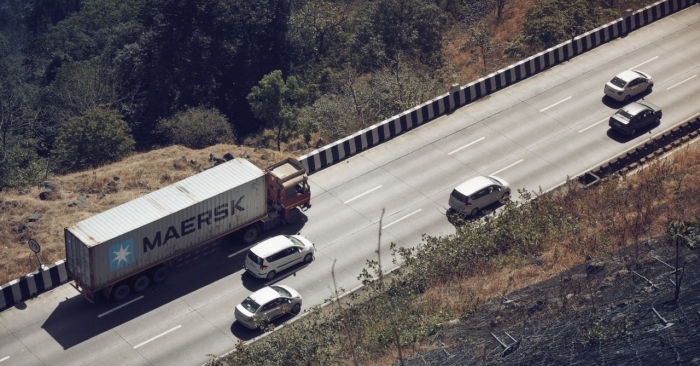14% QoQ growth in containerised export drives India’s recovery: Maersk
December 11, 2020: The global shipping giant Maersk in its India Trade Update Q3, 2020 (July to September) noted that the 14 percent quarter on quarter growth in India’s containerised export is helping the country’s trade recover.

December 11, 2020: The global shipping giant Maersk in its India Trade Update Q3, 2020 (July to September) noted that the 14 percent quarter on quarter growth in India’s containerised export is helping the country’s trade recover.
“Owing to the staggered supply and demand shocks across geographies, combined with challenging economic indicators in Q2 and Q3, Indian containerized trade has been severely impacted in 2020. Whereas exports have recovered strongly, imports remain subdued with signs of slow recovery coming in towards the end of the year,” says the release.
Steve Felder, managing director, Maersk South Asia, said, “Changing patterns in retail behaviours are reshaping the supply chain trends to an extraordinary extent, leading to a growing focus on risk mitigation and resilience-building, while dealing with threats of growing trade protectionism.”
Q3 2020
During Q3 of 2020, the Indian containerised trade contracted by about 8 percent as compared to the same period last year. However, compared to Q2 of 2020, there has been a 31 percent increase in volumes, indicating that trade is on a path of recovery. Exports out of India are up by 14 percent over Q3 of last year while they are 47 percent higher than Q2 of 2020. Imports are however 28 percent lower than Q3 of 2019 but have recovered by more than 30 percent from Q2 2020.
Textiles and apparels drive export
The rising demand for Indian textiles and apparels, especially to the North American markets, has driven tremendous growth in exports in the past quarter. Textiles and apparels contribute a quarter of exports to North America, and these volumes delivered a growth of 10 percent over the same quarter last year. The exports of textiles and apparels to the Mediterranean markets also grew by 10 percent. Other commodities that witnessed growth in exports include tile, stone and glass to the North European region, and seeds, beans, cereal and flour to the Middle East and Mediterranean countries.
Imports into India start showing first signs of recovery
Q3 of 2020 was yet another quarter where imports were lower than the same period in 2019, however, there is some growth compared to Q2 of 2020. Imports of commodities such as paper, metal, appliances and kitchenware have increased since the last quarter, though they are far below the levels in the same period last year. Volumes of appliances and kitchenware coming from China are almost half of what they were last year in the same quarter but are showing a growth of 25 percent over Q2 2020. Imports of paper from the USA show a similar trend, being 40 percent lower than last year’s third quarter, but with a growth of over 25 percent from the last quarter, this year.
Outlook into 2021
As trade continues to navigate foggy conditions, the most recent trends indicate that an overall recovery of import-export trade in India will begin in the first half of 2021.
Talking about the fundamental changes taking place in logistics and supply chains, Steve Felder said, “’ China + 1’ sourcing strategies are benefitting South East Asian countries, and there is much potential for India to take advantage of this shift. Key factors favouring this development are Government’s initiatives to attract investments, focus on developing port and landside infrastructure, technology adoption and automation, lower labour cost and availability of raw materials.”
He further added, “An impetus towards long- term policy reforms should encourage local manufacturing, and developing bilateral and multilateral trade partnerships hold the potential to propel India further, and support its economic growth.”



